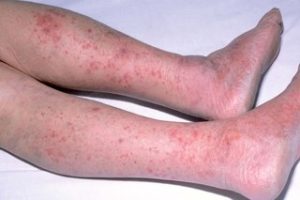What are the warning signs of sepsis – and what to do?
In this article, we will describe what are the warning signs of sepsis – and what to do.
Sepsis is a medical emergency, and should be acted on, as such.
 Meningococcal rash
Meningococcal rash
What is sepsis?
Sepsis is a very serious condition in which the body over-responds to an infection. The infection-fighting processes turn on the body, causing the organs to work poorly.
Sepsis may progress to septic shock. This is a dramatic drop in blood pressure that can damage the lungs, kidneys, liver and other organs. It is immediately life-threatening.
It is not contagious. You cannot ‘catch’ sepsis.
What infections cause it?
Above is a meningococcal rash, a sign of potentially life-threatening meningococcal bacterial infection called ‘meningococcal septicaemia’. Septicaemia means infection in the blood stream.
Meningococcal bacteria can cause meningitis (infection of the outer lining of the brain) or septicaemia (without meningitis).
The rash appears as small, red or purple spots that don’t fade when pressed (the ‘glass test’) and can spread quickly, resembling bruises.

Glass test
But. This is not the only bacteria that is known to cause sepsis. Many 100s of bacteria can, as well as other micro-organisms (e.g. viruses, fungi etc)
There may be no rash.
Symptoms
- Pale, blotchy or blue skin, lips or tongue
- A rash that does not go away when you roll a glass over it (non-blanching)
- Finding it hard to breathe or breathing very fast
- Feeling confused or finding it harder to talk that normal
- A weak, high-pitched cry that’s not like normal
- Being sleepier than normal or difficult to wake.
But. What should you do, if you think you, or someone you know, may have sepsis?
If you’re experiencing possible symptoms or if someone’s life is at risk ..
- Call 999 or NHS111
- Or, go to your nearest Accident and Emergency (A&E) department or urgent treatment centre (UTC).
Remember ..
- Sepsis is a medical emergency.
- Prompt treatment is crucial to prevent serious complications and improve survival chances.
- Don’t hesitate to seek help if you’re unsure.
Summary
We have described what are the warning signs of sepsis, and what to do. We hope it has been helpful.
Other resource
If you think you or someone you look after has symptoms of sepsis, call 999 / NHS111 or go to A&E/UTC. Now.

